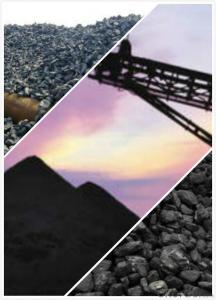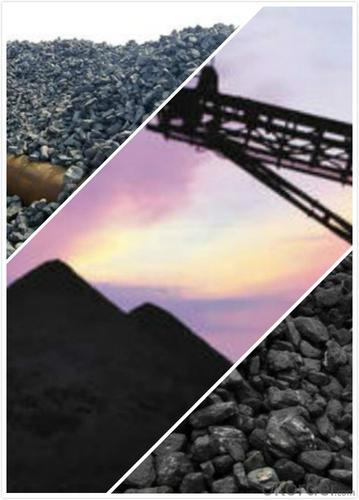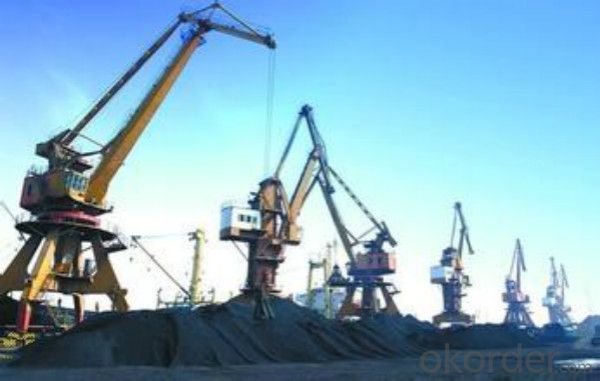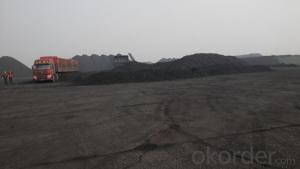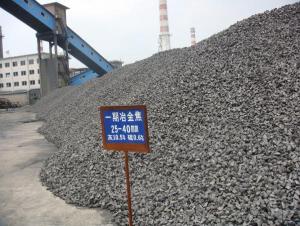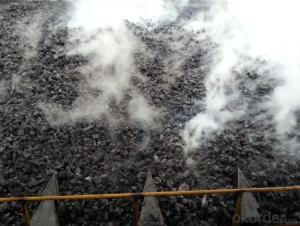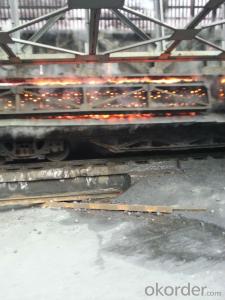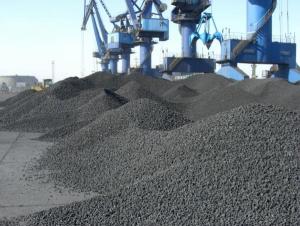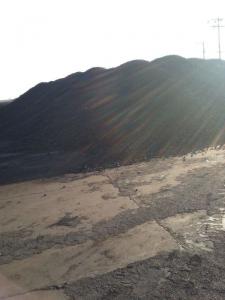S 0.6 Low Ash Metallurgical Coke or Met coke
- Loading Port:
- Qingdao
- Payment Terms:
- TT OR LC
- Min Order Qty:
- 1000 m.t.
- Supply Capability:
- 20000 m.t./month
OKorder Service Pledge
OKorder Financial Service
You Might Also Like
Product Description
Met Coke is a carbon material resulting from the manufactured purification of multifarious blends of bituminous coal. its medium-grade composite contains a high occurrence of unstable components. We can provide products in our general specifications or as customers' requirement. We are willing to cooperate sincerely with friends from all over the world and develop together prosperously. We follow the operation philosophy of contract-abiding, trustworthy, first-rate service and to achieve mutual benefits, and win-win situation. We have established an extensive cooperation relationships with circles of international trade, industry, science and technology, and financial, which established a bridge to connect China and Internation market.
Features
It is widely used in casting and metallurgy Smelting every tons Irons need about 0.4 to 0.6ton coke. As the reducing agent in the steel-making and foundry industry. It is playing more and more important role in the steel industry.
Specification
Item No. | Ash (%) max | S (%) max | F.C. (%) min | V.M (%) max | Moisture (%) max | P (%) max | CSR (%) min | CRI (%) max | Cal.Value (≥Kcal/Kg) |
NF-M001 | 9 | 0.6 | 89.5 | 1.2 | 5 | 0.035 | 65 | 25 | 7250 |
NF-M002 | 10.5 | 0.6 | 88 | 1.2 | 5 | 0.035 | 65 | 25 | 7100 |
NF-M003 | 12 | 0.6 | 86.5 | 1.5 | 5 | 0.035 | 63 | 28 | 6900 |
NF-M004 | 13 | 0.6 | 85.5 | 1.5 | 5 | 0.035 | 60 | 30 | 6800 |
Pictures
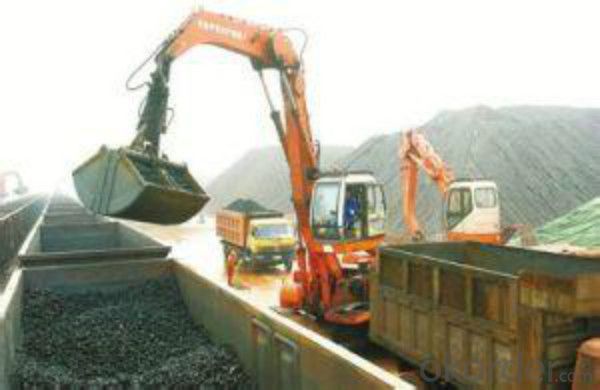
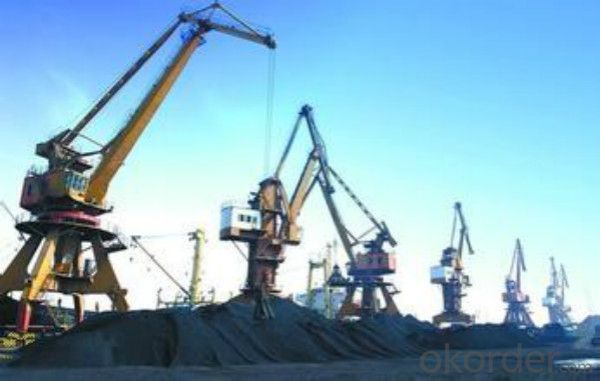
FAQ
1 What is the packing?
Packaging Details: | 1. jumbo ton bag |
2 Payment terms?
D/P, L/C,T/T with advanced payment
- Q: There is a graphite mine, looking for three experts engaged in mineral processing industry asked. They say earthy graphite, and the answer to the taste is quite different. Some say that the fixed carbon content of 15, and some say graphite grade 90%. The same sample. Some people say that very valuable, and some say that the grade is too low, worthless. I'm all confused. What do you mean by graphite grade and fixed carbon?
- The taste of graphite powder refers to its purity, that is, the amount of carbon; fixed carbon content refers to the removal of water, ash and volatile residues, it is an important indicator of the use of coal. The difference between the two is essentially different, you can ask Qingdao Huatai graphite, his information is relatively rich.
- Q: What are the effects of carbon emissions on the stability of mangrove forests?
- Carbon emissions have detrimental effects on the stability of mangrove forests. Increased carbon dioxide in the atmosphere leads to ocean acidification, which negatively impacts mangroves by inhibiting their growth and reducing their ability to survive. Additionally, rising temperatures resulting from carbon emissions contribute to sea level rise, which increases the risk of flooding and erosion in mangrove habitats. This disrupts the delicate balance of the ecosystem and threatens the overall stability and biodiversity of mangrove forests.
- Q: What are the consequences of increased carbon emissions on coastal regions?
- Coastal regions are significantly impacted by the increase in carbon emissions, with various alarming consequences. One particularly concerning effect is the rise in sea levels, which is caused by the melting of glaciers and polar ice caps due to the warming of the planet. This rise in sea levels poses threats such as increased flooding, erosion, and the loss of coastal ecosystems. Aside from the rise in sea levels, increased carbon emissions also contribute to ocean acidification. When seawater absorbs carbon dioxide, it forms carbonic acid, which lowers the pH of the ocean. This decrease in pH has harmful effects on marine life, especially on coral reefs and shellfish. The acidity of the waters makes it difficult for coral reefs to construct their calcium carbonate structures, leading to bleaching and eventual death. Similarly, shellfish like oysters, clams, and mussels struggle to develop their shells in more acidic waters, impacting their survival and the entire coastal food chain. Moreover, higher levels of carbon emissions contribute to the intensification of storms and extreme weather events. Rising temperatures in coastal regions result in more frequent and severe hurricanes, cyclones, and storm surges. These events cause extensive damage to coastal infrastructure, including homes, businesses, roads, and power lines. The increased frequency of storms also puts coastal communities at a higher risk of displacement and loss of livelihoods. Furthermore, increased carbon emissions contribute to global warming, which leads to higher air temperatures. The warming of coastal regions has adverse effects on the overall ecosystem. For example, warmer waters can cause certain species to migrate or become extinct, disrupting the delicate balance of coastal ecosystems. It can also impact the health and productivity of fisheries, affecting the livelihoods of fishing-dependent communities. To summarize, increased carbon emissions have wide-ranging consequences for coastal regions. Rising sea levels, ocean acidification, intensified storms, and the overall warming of coastal ecosystems pose significant threats to the environment, economies, and communities in these areas. It is crucial to reduce carbon emissions and take proactive measures to mitigate these consequences and protect our coastal regions for future generations.
- Q: How are carbon compounds classified?
- Carbon compounds can be categorized according to the type and number of atoms bonded to carbon atoms. There are various types of carbon compounds, including hydrocarbons, alcohols, aldehydes, ketones, carboxylic acids, esters, ethers, amines, amides, and more. Hydrocarbons are carbon compounds solely consisting of carbon and hydrogen atoms. They can be further divided into two main groups: aliphatic hydrocarbons and aromatic hydrocarbons. Aliphatic hydrocarbons include alkanes, alkenes, and alkynes, which are classified based on the carbon-carbon bonds they possess. On the other hand, aromatic hydrocarbons have a ring structure and are known for their aromaticity. Alcohols are carbon compounds with a hydroxyl (-OH) group attached to a carbon atom. They are categorized based on the number of hydroxyl groups connected to the carbon atom. For instance, methanol is a monohydroxy alcohol, while ethylene glycol is a dihydroxy alcohol. Aldehydes and ketones are carbon compounds containing a carbonyl group (C=O). Aldehydes have the carbonyl group attached to a terminal carbon atom, whereas ketones have it attached to an internal carbon atom. Their names are determined by the number and position of the carbonyl group within the molecule. Carboxylic acids are carbon compounds with a carboxyl group (-COOH). They are named by replacing the -e ending of the corresponding hydrocarbon with -oic acid. For example, methane becomes methanoic acid. Esters are carbon compounds derived from the reaction between a carboxylic acid and an alcohol. They have the general formula RCOOR’, where R and R’ can represent any alkyl or aryl group. Often, they are named based on the alcohol and acid used in their formation. Ethers are carbon compounds in which an oxygen atom is bonded to two alkyl or aryl groups. Their names are formed by listing the alkyl or aryl groups in alphabetical order followed by the word "ether". Amines are carbon compounds with a nitrogen atom bonded to one or more alkyl or aryl groups. They are named by adding the suffix -amine to the name of the alkyl or aryl group attached to the nitrogen atom. Amides are carbon compounds with a carbonyl group (C=O) bonded to a nitrogen atom. They are named by replacing the -oic acid or -ic acid endings of the corresponding carboxylic acid with -amide. In summary, the classification of carbon compounds is based on their functional groups and the arrangement of atoms surrounding the carbon atom. These classifications aid in categorizing and studying the diverse range of carbon compounds found in nature and synthesized in laboratories.
- Q: Why use carbon batteries for alarm clocks?
- Look at your clock is what kind of, some nickel battery (batteries) can also be a bit expensive. Lithium battery. And what in fact almost never mind, as long as you start voltage alarm on the line. You said carbon battery is called alkaline battery his standard voltage is 1.5V the charging the battery is generally 1.2V. to this problem is not a reward.
- Q: Stability, primary carbon, two carbon, three carbon, four carbon
- From a variety of hydrogen is substituted alkyl free radicals generated in terms of difficulty order can have free radicals for the formation of tertiary carbon free radical secondary carbon free primary carbon free radicals. Alkyl radicals generated methyl easily, can be explained from two aspects: (1) different required to form free radicals when the fracture of C-H the energy, the (CH3) 3C-H fracture, the energy required for the smallest, most easily generated.
- Q: Carbon emissions trading stocks latest list of carbon emissions trading stocks what?
- Carbon trading concept of a total of 21 listed companies, of which 12 carbon trading concept listed companies trading on the Shanghai Stock Exchange, and 9 other carbon trading concept listed companies trading in the Shenzhen stock exchange.Automatic matching based on the cloud financial leading excavator, carbon trading stocks leading shares most likely from the following stock was born in Tianke, electrical, environmental protection up to confidence.
- Q: What is carbon nanowire?
- Carbon nanowires are one-dimensional structures made entirely of carbon atoms. They are incredibly thin, with diameters ranging from a few nanometers to a few micrometers, while their length can vary from a few micrometers to several centimeters. These nanowires possess exceptional electrical, thermal, and mechanical properties due to their unique structure and composition. Carbon nanowires can be produced through various methods, such as chemical vapor deposition, electrospinning, or template synthesis. They can have different structures, including single-walled or multi-walled, and can be straight or coiled. The properties of carbon nanowires can be further enhanced by incorporating other elements or functional groups into their structure. One of the most significant advantages of carbon nanowires is their high electrical conductivity, which makes them suitable for various electronic and energy applications. They can be used as interconnects in nanoscale devices, electrodes in energy storage devices like batteries and supercapacitors, and in sensors for detecting various substances due to their exceptional sensitivity. Carbon nanowires also exhibit exceptional mechanical properties, such as high tensile strength and flexibility. These properties make them suitable for applications in nanotechnology, including reinforcement in composite materials, nanoscale actuators, or as templates for fabricating other nanoscale structures. Furthermore, carbon nanowires possess excellent thermal conductivity, which makes them potential candidates for thermal management applications, such as heat sinks or as fillers in thermal interface materials. In summary, carbon nanowires are ultrathin carbon-based structures with remarkable electrical, thermal, and mechanical properties. Their unique characteristics make them promising materials for a wide range of applications in electronics, energy, sensing, nanotechnology, and thermal management.
- Q: Why are biological molecules carbon based molecular aggregates?
- C is the core elements of life. C is the most basic element of a cell. C accounts for 56% of the cell dry weight and is the most important element.
- Q: What are the impacts of carbon emissions on the stability of grasslands?
- Carbon emissions can have significant impacts on the stability of grasslands. Increased levels of carbon in the atmosphere contribute to global warming, which in turn leads to changes in precipitation patterns and higher temperatures. These changes can result in drought conditions and increased frequency and intensity of wildfires, both of which can destabilize grasslands. Additionally, elevated carbon dioxide levels can promote the growth of invasive plant species, which can outcompete native grasses and disrupt the balance of grassland ecosystems. Overall, carbon emissions pose a threat to the stability and biodiversity of grasslands.
Send your message to us
S 0.6 Low Ash Metallurgical Coke or Met coke
- Loading Port:
- Qingdao
- Payment Terms:
- TT OR LC
- Min Order Qty:
- 1000 m.t.
- Supply Capability:
- 20000 m.t./month
OKorder Service Pledge
OKorder Financial Service
Similar products
Hot products
Hot Searches
